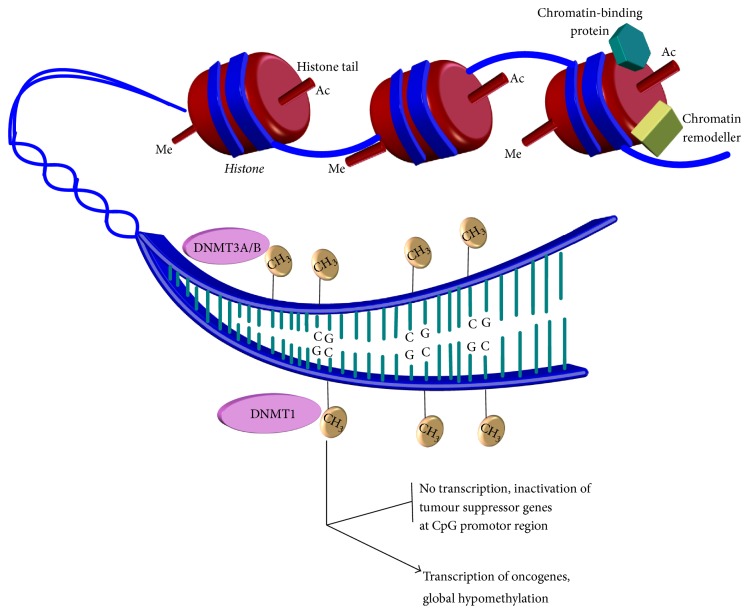Figure 1.
DNA methylation by DNA methyltransferase enzymes. An illustration showing the positively charged histones binding the negatively charged DNA into compact chromatin to prevent gene transcription. The figure shows how other proteins can interact with histones to regulate transcription of genes. Modifications of histones tails such as acetylation and methylation change chromatin architecture, unwinding chromatin to allow access to the DNA sequence. Several other proteins, including chromatin remodellers, can also affect chromatin architecture. Regulators such as DNA methyltransferase enzymes are then able to access DNA to add methyl groups (CH3) to appropriate cytosine bases. The methyl group is added to the C5 position of the pyrimidine ring to produce 5-methylcytosine (5mC). Aberrant methylation as illustrated can inactivate tumor suppressor genes (through hypermethylation) and increase expression of oncogenes (through hypomethylation of promotor sites of these genes), both of which can contribute to leukaemogenesis.

